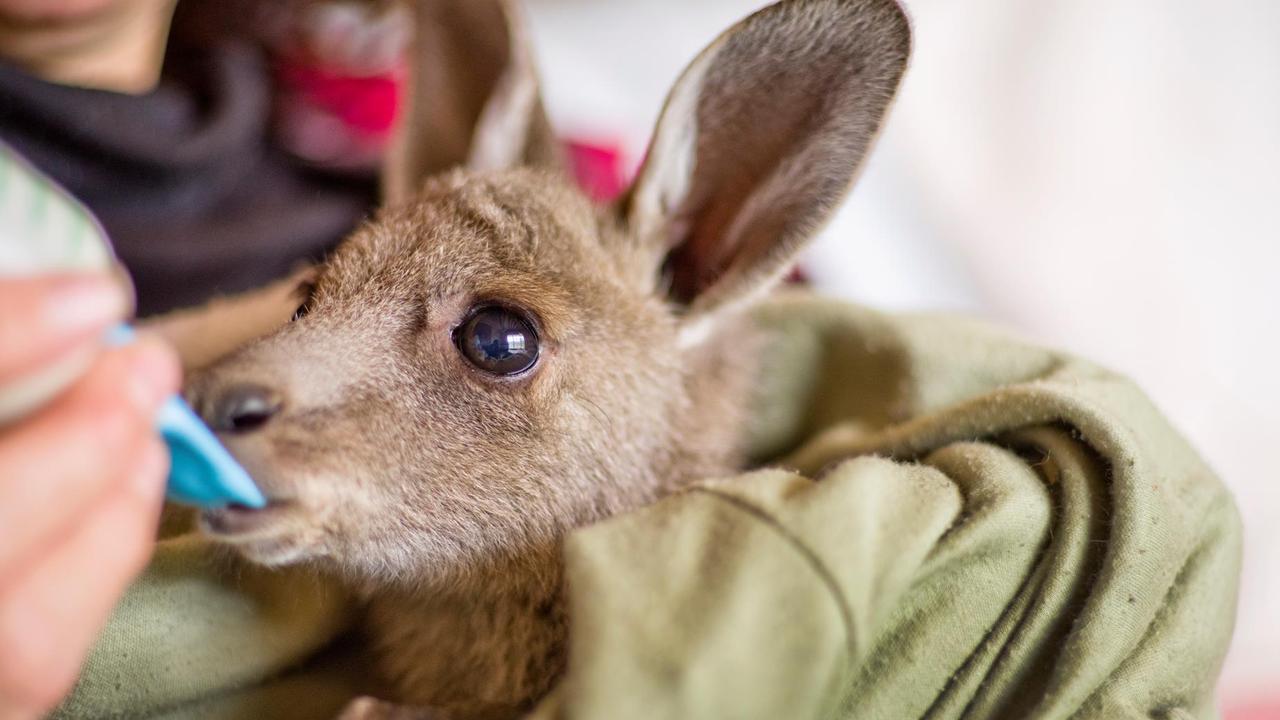The chequered history of two-up, our Anzacs’ favourite game
TWO-UP has been illegal for much of its existence but it’s always been a working class hit. Where did the game come from, and why was it so popular?
VIC News
Don't miss out on the headlines from VIC News. Followed categories will be added to My News.
THE dance of two pennies through the air is part of Australia’s cultural identity because of its inextricable link to the Anzacs.
But the tradition goes back much further than World War I and taps into our anti-authoritarian streak and love of a bet.
Australia’s earliest settlers adapted pitch and toss, a game popular in both England and Ireland, in which players wagered on the toss of coins towards a wall. The player whose coin landed closest to the wall won the dough.
Two-up, also known as swy, was popular with the lower echelons of colonial society.
Convicts, emancipists and soldiers who were excluded from card games favoured by the early elite of Sydney loved it
But as early as 1798, the first judge advocate of NSW, David Collins, warned in a report on the colony that novice gamblers “often lost the very shirts on their wretched backs” as they “tossed up”.
Start your exclusive Anzac to Afghanistan Official 2016 Coin Collection, FREE with tomorrow’s paper

Moving two-up schools spread the game far and wide, and it was popular during the gold rushes and mineral booms of the 1800s.
In the days before John Wren’s private racecourses spread through Melbourne, and when gambling outside the track was only tolerated behind closed doors in private clubs, two-up flourished in most centres in Victoria and across the nation.
There were plenty of objections to the game on the grounds of morality and class from churches, anti-gambling campaigners and sections of the press, while governments were also concerned by the tax implications of the illegal game.
Two-up’s portability made it tough for police to catch up with the illegal schools and prosecute offenders.
Some corrupt coppers let games carry on quietly in dark corners of our towns and cities.
A Victorian government report into gambling in 1999 noted that in the old days, two-up schools excluded women and often shunned non-Anglo Saxon culture.

World War I cemented two-up’s place in Australian culture.
In the battlefields of Europe, Anzacs from both sides of the Tasman embraced two-up as a kind of national sport.
The Australian War Memorial has many photographs, works of art and even a few films of soldiers, sailors and airmen from both world wars sweating on the toss of a coin as a welcome distraction to life in battle.

Still illegal, authorities have turned an official blind eye to two-up and other forms of gambling enjoyed by service personnel such as crown and anchor, on Anzac Day.
Most jurisdictions, including Victoria, have now legalised two-up on Anzac Day in certain circumstances.
Here, it’s now legal in RSL clubs and sub-branches, and a legal game is played at Flemington racecourse.
The illegal game thrived through the ‘20s and ‘30s with Thommo’s two-up school, a mobile haven for gamblers in inner city Sydney, one of the best known in a string of big schools around the country.

Here in Melbourne, there was Lionel “Nappy Ollington.
Nappy played five games of VFL football for Footscray in 1953, kicking three goals, but that was hardly his greatest claim to fame.
He was Melbourne’s king of swy, with a string of highly successful schools through the 1960s and ‘70s.
He battled for decades to get the game legalised full-time in Victoria, and had a small success in 1991 when he and former Victorian RSL boss Bruce Ruxton joined forces to convince the Victorian government to legalise two-up on Anzac Day.
Nappy’s legal Anzac Day school was held at the Flemington racecourse.

In March 2014, two months before his death after a long battle with cancer, footage was revealed by the Herald Sun of drug baron Tony Mokbel winning fistfuls of cash at Nappy’s 1996 Anzac Day legal school.
Nappy told the Herald Sun’s Keith Moor that he was not aware of Mokbel at the time but that a criminal element was common at his schools.
“I had no idea who he was, but he certainly wasn’t the only criminal who attended my illegal and legal two-up games,” he said.
“The two-up provided an actual service for police. If they were looking for any crooks they would come to my game”.
He said that as a boy, he watched two-up schools outside the Golden Fleece Hotel in South Melbourne in the 1930s.
“I went to watch them play two-up and marvelled at how much money changed hands,” he told Moor.
He opened his first illegal school in a room above a North Melbourne nightclub, opposite the Queen Victoria Market, in the early 1960s. Floating games that attracted hundreds of punters soon followed.
“There was never much trouble, they just wanted to play two-up and they knew causing trouble would get them barred,” Nappy said.
“There wasn’t much else going on in Melbourne in those days, two-up was it.”

By the 1970s, that began to change. Legal gambling options, such as off-course totes and lotteries, took their toll on the game.
Eventually, Nappy sold out to Mick Gatto.
Two-up was first legalised at Hobart’s Wrest Point Casino, Australia’s first legal casino, in 1973.
Famous illegal two-up games in the mining towns of Kalgoorlie and Broken Hill were legalised in the 1980s.
Two-up has fallen out of favour at many Australian casinos, including Crown Melbourne.
Purists argue the casino version is just a bastardised version of the real thing.
Do you love a game of two-up on Anzac Day? Have you ever played at an illegal two-up school? Let us know in the comments below.


